#AIandRobotics
Text
0 notes
Text
The Future of Robotics - Trends and Predictions for the Next Decade (2030)
The future of robotics presents an exciting and transformative journey, shaping industries and daily lives in ways previously only imagined in science fiction. As we approach 2030, the field of robotics stands on the brink of a new era, driven by advancements in artificial intelligence, machine learning, and automation. This evolution promises not only to enhance current robotic capabilities but also to introduce novel applications and solutions. The intersection of robotics with other burgeoning technologies is set to redefine the landscape of work, healthcare, and personal convenience. As we delve into this exploration, it's essential to understand the trajectory of robotic technology and its potential impact on various facets of human life and society.
This voyage towards 2030 will witness robotics transcending traditional boundaries, moving beyond manufacturing and industrial applications to more personal and interactive domains. The integration of robotics in everyday life is expected to become more seamless and intuitive, catalyzing a shift in how we perceive and interact with these machines. As robotics becomes more ingrained in our daily routines, the line between human and machine interaction will blur, leading to a more interconnected and efficient world. The progress in robotics also indicates a future where challenges such as labor shortages, accessibility issues, and environmental concerns are addressed more effectively through robotic solutions.
The forward march of robotics also raises important questions about the future landscape of employment, ethics, and human-robot coexistence. As robots become more capable and autonomous, industries and economies will undergo significant transformations. The role of humans in this new paradigm will evolve, necessitating adjustments in education, skill development, and social policies. Understanding and preparing for these changes is crucial as we embrace the future of robotics, ensuring that the benefits of these advancements are maximized while mitigating potential challenges.
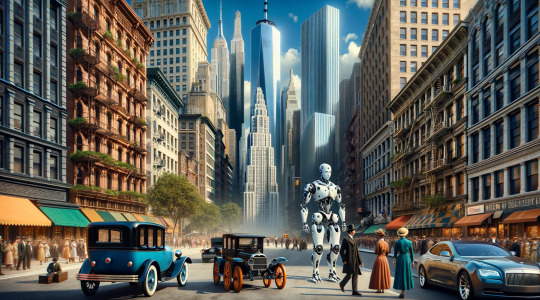
Embracing the Future: Robotics' Journey to 2030
As we gaze towards 2030, the journey of robotics is expected to be marked by significant milestones and breakthroughs. This progression will be underpinned by rapid advancements in technology, including smarter AI, enhanced sensory perceptions, and more sophisticated algorithms. These developments will enable robots to perform more complex tasks, adapt to dynamic environments, and offer more personalized interactions. The future of robotics envisions machines that are not just tools but partners capable of learning, evolving, and working alongside humans in various capacities.
The democratization of robotics technology is another key aspect of this journey. As costs decrease and accessibility increases, robotic solutions will penetrate deeper into small businesses, homes, and educational institutions. This widespread adoption will be facilitated by user-friendly interfaces and improved safety features, making robots more approachable and useful for a broader demographic. The implications of this trend are profound, as it opens doors for innovation and creative applications of robotics in sectors previously untouched by this technology.
Sustainability and environmental consciousness will also shape the future of robotics. As global challenges like climate change and resource depletion intensify, robots will play a pivotal role in offering sustainable solutions. From precision agriculture to efficient waste management, robotic technologies will contribute to more sustainable practices across industries. The emphasis on eco-friendly materials and energy-efficient designs in robotics will further align this field with the broader goals of sustainability and environmental stewardship.
Another exciting dimension of the journey to 2030 is the potential for robotics to bridge the gap in healthcare and accessibility. Robots will increasingly assist in surgeries, rehabilitation, and elderly care, offering precision and consistency that augment human capabilities. For individuals with disabilities or limited access to healthcare, robotics can offer life-changing assistance and support, breaking down barriers and enhancing quality of life.
What We Can Anticipate in the Next Decade with the Robotics Revolution
The next decade is poised to witness a robotics revolution, characterized by profound changes in how we live, work, and interact with technology. The integration of robotics into daily life will be more pronounced, with robots becoming commonplace in homes, workplaces, and public spaces. This ubiquity will be driven by advancements in AI and machine learning, enabling robots to understand and respond to human needs more effectively. The evolution of robots into more empathetic and intuitive entities will significantly enhance their roles as helpers, caregivers, and companions.
In the industrial and manufacturing sectors, the robotics revolution will continue to redefine efficiency and productivity. Robots will take on more complex tasks, working alongside humans to optimize workflows and decision-making processes. The blend of human creativity and robotic precision will unlock new levels of innovation and quality in products and services. This revolution will also extend to logistics and supply chain management, where autonomous robots and drones will play crucial roles in streamlining operations and ensuring timely delivery of goods.
The impact of the robotics revolution on the job market and skills landscape will be significant. While certain tasks will become automated, new job roles centered around robotics, AI, and data analysis will emerge. The demand for skills in programming, maintenance, and supervision of robotic systems will grow, underscoring the need for education and training in these areas. The revolution will not just automate tasks but will also create opportunities for human workers to engage in more meaningful and creative endeavors, redefining the nature of work in the process.
Decoding the Trends of the Future
As we decode the trends shaping the future of robotics, several key themes emerge. The convergence of robotics with technologies like 5G, cloud computing, and advanced sensors will lead to more capable and interconnected robotic systems. This integration will facilitate real-time data exchange and remote operation, expanding the potential applications of robotics across different domains. The future will see robots not only as standalone entities but as parts of a larger, intelligent network of systems working in synergy.
Customization and personalization will be significant trends in the robotics field. As AI becomes more sophisticated, robots will be able to tailor their responses and actions based on individual preferences and behaviors. This personalization will be particularly evident in consumer robotics, where machines will adapt to the unique needs and habits of users, enhancing convenience and user experience.
Another trend to watch is the advancement of human-robot interaction. The development of more natural, intuitive interfaces will make interacting with robots easier and more intuitive. This will be achieved through advancements in voice recognition, gesture control, and even emotional intelligence, allowing robots to understand and respond to human emotions and social cues more effectively.
In terms of applications, the future of robotics will see a significant expansion into new sectors. Education, entertainment, and personal care are just a few areas where robotic applications will grow. In education, for instance, robots can offer personalized learning experiences and assistive technologies, while in entertainment, they could create more immersive and interactive experiences.
Finally, ethical considerations and governance will become increasingly important as robotics technology advances. Issues surrounding privacy, security, and the ethical use of AI in robotics will require careful consideration and regulation. Establishing frameworks for responsible development and deployment of robotics will be essential to ensure that these technologies are used for the benefit of society and in alignment with ethical standards. The conversation about robotics in 2030 will not just be about technological capabilities but also about how these technologies are integrated responsibly and sustainably into our world.
The Historical Path to the Robotics of Tomorrow
The journey to the future of robotics is richly woven with advancements, breakthroughs, and innovations that have shaped its current state and projected trajectory. As we stand on the cusp of a new era in robotics, it is vital to acknowledge and understand the historical developments that have brought us to this point. The evolution of robotics has been a continuum of human ingenuity and technological progress, beginning from the early days of mechanical automata to the sophisticated, AI-driven robots of today. This historical context is not just a record of technological advancement but a narrative of how human aspirations and creativity have consistently pushed the boundaries of what is possible.
The story of robotics is marked by key moments where vision, science, and necessity converged to create breakthroughs. Early robotic inventions, primarily conceptual and rudimentary in function, laid the foundational principles of automation and mechanization. These initial steps were critical in setting the stage for more complex developments. Over time, robotics evolved from simple machines performing basic tasks to more complex systems capable of a range of functions. Each phase of this evolution was characterized by an increasing sophistication in design, functionality, and application. This journey was not just a technological one but also reflected a growing understanding of the potential roles robots could play in various aspects of human life.
As we trace the path leading to the future of robotics, it becomes apparent how past innovations have been pivotal in shaping current robotics trends. The transition from manual to automated processes in industries, the development of robotic arms, and the introduction of computer programming and AI into robotics are some of the landmarks in this journey. These developments have not only expanded the capabilities of robots but have also opened up new possibilities and applications, setting the stage for the next leap in the future of robotics.
Tracing the Roots: From Early Inventions to the Future
The roots of robotics can be traced back to ancient times when the first concepts of automatons were imagined and created. These early inventions, though primitive by today's standards, represented the initial human aspiration to create machines that could mimic human actions. The journey from these early mechanical constructs to the sophisticated robots of today is a testament to human ingenuity and the relentless pursuit of innovation. Throughout history, each invention and discovery in the field of robotics has built upon the previous, leading to an exponential growth in capabilities and applications.
The industrial revolution marked a significant turning point in the history of robotics. The introduction of steam power and mechanization laid the groundwork for future robotic technologies. This era saw the transformation of industries through automated machines, setting the precedent for the integration of robotics in industrial processes. The 20th century brought further advancements with the development of electronic and digital technologies, paving the way for the first programmable robots. These robots, though basic in functionality, were revolutionary, introducing the concept of automation in manufacturing and production.
The late 20th and early 21st centuries witnessed a surge in robotics development, fueled by advancements in computing and artificial intelligence. This period saw the emergence of robots capable of performing complex tasks, from precision manufacturing to navigating varied terrains. The integration of AI and machine learning brought a new dimension to robotics, enabling robots to learn, adapt, and make decisions. This period set the foundation for the current robotics trends and has been instrumental in shaping the direction of the future of robotics.
Paving the Way for 2030 and Beyond with Milestones in Robotics
The history of robotics is marked by several key milestones that have significantly influenced its path towards 2030. One such landmark was the development of the first industrial robot in the 1960s, which revolutionized manufacturing processes. This breakthrough demonstrated the potential of robots to enhance productivity and precision in industrial settings. The subsequent decades saw the refinement of these industrial robots, making them more versatile, efficient, and accessible to a broader range of industries.
The advent of the internet and advancements in sensor technology brought about the next major milestone in robotics. These technologies enabled robots to be more interconnected and responsive to their environments, leading to the development of autonomous robots capable of navigating and operating with minimal human intervention. The introduction of collaborative robots (cobots) is another pivotal milestone. Designed to work alongside humans, cobots represent a significant shift in the perception and application of robots, highlighting their potential to augment human capabilities rather than replace them.
The integration of advanced AI and machine learning algorithms in recent years has marked the latest milestone in the evolution of robotics. This integration has not only enhanced the cognitive capabilities of robots but has also enabled them to perform tasks that were previously thought to be exclusive to humans, such as natural language processing and complex problem-solving. These milestones have not only paved the way for the current state of robotics but have also set the trajectory for future developments and applications, leading up to 2030 and beyond.
AI as the Catalyst for a Grand Future of Robotics
As Artificial Intelligence (AI) emerges as a pivotal catalyst in the evolution of robotics, it is marking a new chapter in the future of robotics. The integration of AI into robotics has transformed robots from programmable machines to intelligent entities capable of learning, adapting, and making decisions. This fusion of AI and robotics is at the heart of the current revolution in the field, driving innovations and applications that were once unimaginable. As we look towards 2030, AI's role in shaping the trajectory of robotics is undeniable, with its influence permeating every aspect of robotic design, functionality, and application.
The capabilities of AI-powered robots are constantly expanding, with advancements in machine learning, neural networks, and computer vision. These technologies enable robots to process vast amounts of data, learn from experiences, and interact with their environments in more sophisticated and human-like ways. The future of robotics envisions robots that not only perform tasks but also understand and anticipate human needs, making interactions more natural and intuitive. The potential applications of AI in robotics are vast, ranging from personal assistants and caregiving robots to autonomous vehicles and smart manufacturing systems.
One of the most significant impacts of AI in robotics is the ability to handle complex, unstructured environments. Unlike traditional robots confined to controlled settings, AI-enabled robots can operate in dynamic and unpredictable environments, making them suitable for a wide range of applications, from disaster response to healthcare. This adaptability is key to the widespread adoption and integration of robots in various aspects of life and work.
Collaborative robots or cobots are another area where AI is making a substantial impact. By integrating AI, cobots can learn from and adapt to human workers' behavior, leading to more efficient and harmonious human-robot collaboration. This collaboration is critical in industries where precision, flexibility, and safety are paramount. The AI-driven evolution of cobots is not only enhancing productivity but is also redefining the nature of work, making it more interactive and integrated.
The role of AI in enhancing the cognitive abilities of robots is also paving the way for breakthroughs in autonomous decision-making and problem-solving. Future robots will not only execute tasks but also make informed decisions based on real-time data and analysis. This level of autonomy and intelligence is essential for applications where human intervention is impractical or impossible, such as deep-sea exploration or space missions. The integration of AI is, therefore, not just an enhancement of robotic capabilities but a fundamental shift in the role and potential of robots in society and industry.
How Robotics Will Reshape Our World by 2030
By 2030, the societal integration of robotics is expected to reshape our world in profound ways. The ubiquity of robots in daily life will mark a significant shift in how we interact with technology, blurring the lines between human and machine capabilities. This integration will manifest in various aspects of life, from automated transportation and smart homes to personalized healthcare and education. The impact of this integration will be far-reaching, affecting social structures, economic models, and cultural norms.
One of the most notable impacts of robotics on society will be in the realm of employment and the workforce. The increasing adoption of robots will lead to the automation of certain tasks, necessitating a shift in the job market and skill requirements. However, this shift also presents opportunities for new job creation in fields related to robotics, AI, and data analysis. The challenge and opportunity lie in preparing the workforce for this new landscape, emphasizing skills development and education in relevant fields.
In addition to the workforce, the integration of robotics in everyday life will have significant implications for accessibility and quality of life. Robots will provide assistance and support to the elderly, individuals with disabilities, and those requiring specialized care, enhancing independence and well-being. The personalized and adaptive nature of these robotic systems will ensure that the benefits of technology are accessible to a wider demographic, promoting inclusivity and equality.
The journey to 2030 will see robotics becoming an integral part of our social fabric, influencing how we live, work, and interact with the world around us. The societal integration of robotics will not only redefine our relationship with technology but will also open up new possibilities for innovation, collaboration, and human enhancement.
Read the full article
#AIandRobotics#FutureofRobotics#RoboticTechnologyPredictions#robotics2030#RoboticsandEthics#RoboticsandGlobalEconomy#RoboticsinDailyLife#RoboticsinHealthcare2030#RoboticsRevolution#roboticstrends#RoboticsTrends2030#TechnologicalInnovationsinRobotics
0 notes
Text
Service Robots: The Game-Changers in Every Industry
Service robots are a large category of automated equipment that helps humans with daily tasks. Typical industrial automation applications are often excluded by these robots. However, they are frequently utilized in industrial environments. These robots do repetitive, filthy, and occasionally dangerous activities. In this blog, let’s explore the information regarding these robots.
Growing automation demand in both the home and commercial sectors for increased worker safety, efficiency, and productivity has enabled service robots to be extremely creative and efficient. These factors boost the market growth. In addition, according to a research report by Astute Analytica, the Global Service Robots Market is likely to grow at a compound annual growth rate (CAGR) of 21% over the projection period from 2022 to 2031.
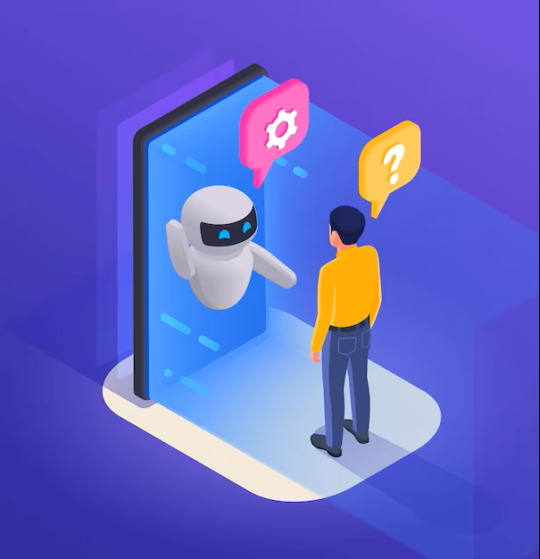
Varieties of service robots:
Logistics Service Robots
Transportation and logistics duties abound in industrial manufacturing plants. The huge area and complex industrial environment need the transfer of components and equipment. These tasks are sometimes handled by people. However, their duties are repetitious, and dull, and do not necessitate complicated decision-making. As a result, service robots are frequently used for logistics tasks.
Medical Service Robots
Medical robots are highly regarded in scientific and hospital fields. They free up doctors and nurses to work on more complex jobs by taking on non-essential tasks. The global shortage of medical personnel has boosted the demand for service robots to fill the void.
Commercial Service Robots
Commercial fields have some of the most fascinating advancements for service robots. New and innovative applications for these robots are appearing in the culinary, service, and retail sectors. These robots in commercial applications enable businesses to give a higher degree of service to their clients. Service robots are commonly used in the following sectors:
Restaurants
Food Delivery
Airports
How service robots are changing customer service?
Here are two methods that service robots are revolutionizing customer service:
Service robots can assist people in identifying and addressing issues more rapidly
A service robot can swiftly identify and resolve client issues, saving person time and money. For instance, this robot can verify customers’ account status, log their conversations with the firm, and give them messages when they hit particular thresholds or milestones. This can aid people keep firm consumers satisfied while also increasing the efficiency of the firm.
Service robots can take the role of human customer service employees
Several firms are substituting human customer support workers with service robots to reduce money and increase customer happiness. For instance, humans may be in charge of answering phones, processing complaints, and providing refunds, while this robot can accomplish all of these things at the same time or in quick succession (based on the robot’s abilities). This means people can concentrate on other duties, such as building their business, without being concerned.
Is a service robot appropriate for people?
Service robots solve critical gaps in both classic and non-traditional robotics businesses. A few things can influence whether this robot is right for people. Evaluate whether the following situations apply to people and whether this robot could meet a need of the person.
#ServiceRobots#Automation#RoboticTechnology#IndustryInnovation#FutureOfWork#RoboticsRevolution#AIandRobotics#EfficiencyBoost#TechAdvancements#AutomationSolutions#RobotAssistants#SmartTechnology#IndustryTransformation#InnovationInRobotics#RoboticsTrends#DigitalTransformation
0 notes
Text
How Does AI Work: A Comprehensive Guide to Understanding
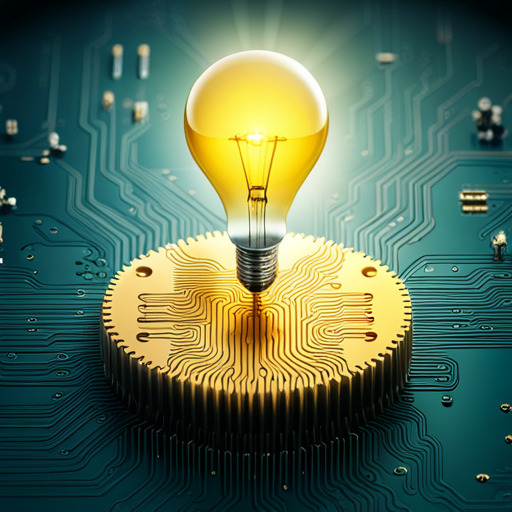
How Does AI Work?
The term "Artificial Intelligence" (AI) has recently become quite popular. The tech industry. But what exactly is AI? How does it work? And how is it shaping our world?
The Beginnings of AI: A Historical Perspective

How Does Ai Work?
The Origin of the Concept of AI
The concept of AI originated in the mid-20th century when computer scientists started to explore the possibility of developing machines that could mimic human intelligence. In 1956, the term "Artificial Intelligence" was coined at the Dartmouth Conference, signifying AI's birth as a study discipline.
The Evolution of AI: From Theory to Practice
Throughout the years, AI has transformed from a theoretical concept into a practical instrument that has revolutionized numerous industries. Advances in computational power, data availability, and algorithmic techniques have propelled the development of AI, allowing for the creation of intelligent machines that can perform tasks that were once believed to be exclusive to humans.
Understanding the Fundamentals of AI

Understanding The Fundamentals Of Ai
Defining AI: What It Is and What It Is Not
The term AI stands for Artificial Intelligence and pertains to computer science. Deals with creating intelligent machines. It deals with creating intelligent machines.t seeks to construct systems for tasks requiring human intelligence. These responsibilities include learning from experience, comprehending natural language, recognizing patterns, solving problems, and making decisions. The field of computer science that concentrates on AI is all about... the development of intelligent machines. Seeks to construct systems for tasks requiring human intelligence.
The Principal AI Components: Deep Learning and Machine Learning
Machine Learning (ML) and Deep Learning (DL) are the pillars of artificial intelligence (AI). ML teaches machines to learn from data and enhance performance over time without being explicitly programmed. DL, a subset of ML, entails training artificial neural networks on voluminous amounts of data and employing them to make predictions or decisions. For example, AI can predict the price of a flight based on the airline, origin airport, destination airport, and departure date. It learns from historical data on ticket prices and applies this knowledge to forecast future prices.
How Does AI Work Step-by-Step?
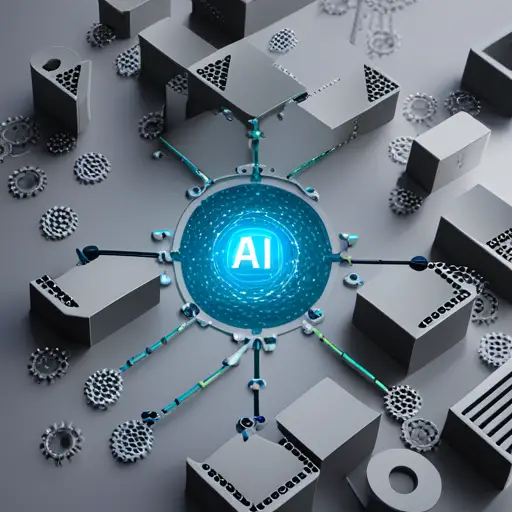
How Does Ai Work Step-By-Step?
The AI Process: A Step-by-Step Deconstruction
Many stages comprise the AI procedure: data collection, preprocessing, model training, model evaluation, and model deployment. Data is gathered from multiple sources and preprocessed to eliminate errors or inconsistencies. The data that has been preprocessed is then used to train an AI model. The performance of the model Using a distinct data set, the model's performance is assessed. If the model's performance is adequate, it is deployed for actual use. Applying this method is using AI in healthcare to predict whether a patient has diabetes. Inputs for this case include the patient's number of pregnancies (if female), glucose level, blood pressure, age, and insulin concentration.
The Function of Data in AI: Providing Fuel for the AI Engine
AI heavily depends on data, allowing machines to learn from past experiences and predict. The more access an AI system has to high-quality data, the greater its performance. How AI employs neural networks to process information and establish data connections is apparent. These neural networks function similarly to the human brain, enabling AI to process immense data sets and go "deep" in drawing references, forming connections, and weighing input.
The Complicated Nature of AI: How Does AI Work?

The Complicated Nature Of Ai: How Does Ai Work?
The AI Algorithms: The Mind Driving AI
AI algorithms constitute the brain of AI. The principles or instructions guide learning an AI system. Different kinds of algorithms are utilized. Regression algorithms are used for prediction tasks, while classification algorithms are used for categorization.
The AI Models: The Functionality Blueprint for AI
AI models serve as the blueprint for AI capabilities. They represent the AI system's mathematical and computational structure. Once an AI model has been trained on a dataset, it can make predictions or decisions based on new data.
How does AI learn and function?
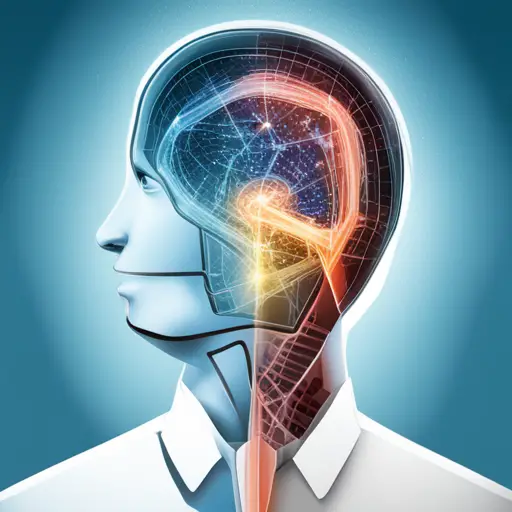
How Does Ai Learn And Function?
The AI Learning Process: Supervised, Unsupervised, and Reinforcement
AI systems can learn through various methods, such as supervised, unsupervised, and reinforcement learning. In supervised learning, an AI system is trained on a labeled dataset, i.e., a dataset for which the correct response is known. In unsupervised learning, an AI system is trained on an unlabeled dataset, i.e., a dataset for which the correct response is undetermined. In reinforcement learning, an AI learns by interacting with its environment and receiving feedback through rewards and consequences.
Neural Networks' Role in AI Learning
Neural networks are essential to AI intelligence. Neural networks Modeled after the human brain, neural networks consist of interconnected layers of nodes or "neurons" that process and learn from data. Two critical areas of artificial intelligence are image recognition and natural language processing. Complex tasks that neural networks perform exceptionally well.
AI in Action: How Does AI Work in the Real World?

Ai In Action: How Does Ai Work In The Real World?
Real-World Implementations of AI: From Smartphones to Driverless Vehicles
AI has become indispensable daily, powering smartphone virtual assistants such as Siri and Alexa. In the healthcare sector, AI is being used to predict patient risk factors, assist in diagnosis, and even in robotic surgery. Google's DeepMind, for example, has developed an AI system that can diagnose eye diseases as accurately as top doctors. The finance industry uses AI for fraud detection, risk assessment, and algorithmic trading. Companies like JPMorgan Chase use AI to analyze legal documents and contracts faster and more accurately. In retail, AI is used for personalized recommendations, inventory management, and customer service.
A prime example is Amazon's recommendation engine
which uses AI to suggest products to customers. It is present in our vehicles and enables automatic braking and self-parking features. It regulates intelligent home devices such as thermostats and lighting systems. And it exists in our workplaces, automating repetitive duties and providing data-driven insights. AI is also utilized in various applications, including the automation of residential appliances and voice recognition systems. It is also utilized in self-driving vehicles, live chatbots, interactive video games, wearable sensors and devices, biosensors for medical purposes, and stock trading computer advisors.
The Influence of AI on Diverse Industries
AI is transforming numerous industries, including, but not limited to, industries such as healthcare, finance, and retail. Transportation. In healthcare, AI is utilized for disease prediction and diagnosis, drug discovery, and patient care. AI is used in finance for detecting deception, managing risks, and making investment decisions. The retail industry uses AI for personalized marketing, inventory administration, and customer service. Moreover, AI is used in transportation for route optimization, traffic management, and autonomous vehicles.
The Future of AI: Trends and Forecasts
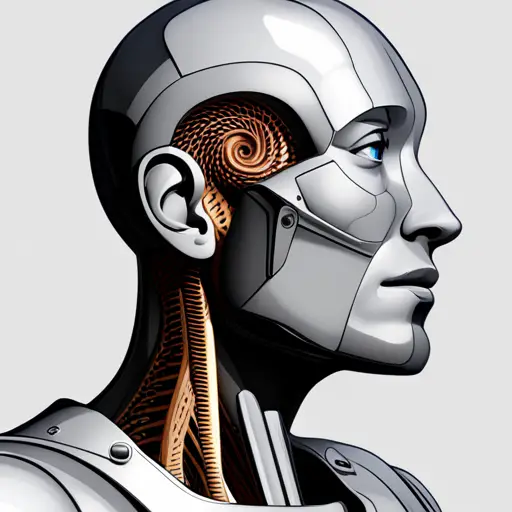
The Future Of Ai: Trends And Forecasts
What's Next for Artificial Intelligence (AI)?
Every day, new advancements are made in AI, which is swiftly advancing. In Natural Language Processing (NLP), transformer-based models like GPT-3 and BERT have revolutionized how machines understand and generate human-like text. In computer vision, advancements have led to the development of AI systems that can identify objects, people, and emotions from images and videos. This technology is used in self-driving cars, facial recognition systems, and more. AI is also being increasingly used in healthcare and finance. For instance, AI predicts disease outbreaks, assists in patient care, and automates trading. Developing more sophisticated AI models that can manage more complex tasks and make more accurate predictions is one of the leading trends in AI. In natural language processing, for instance, we are witnessing the rise of transformer-based models that can comprehend the context and nuances of human language.
Integration of AI with other technologies
such as the Internet of Things (IoT) and blockchain, is another trend. AI and IoT facilitate the development of Intelligent devices and systems that can sense. Learn, and act based on the data they accumulate. In the meantime, combining AI and blockchain creates new opportunities for developing secure and transparent AI applications.
AI's Obstacles and Opportunities
Despite AI's progress, there are still numerous obstacles to surmount. The issue of data privacy and security is one of the major obstacles. As AI systems rely on vast data, this data must be handled responsibly and securely.
Another difficulty is the possibility of AI bias.
If the data used to train an AI system is biased, so will the system's predictions and decisions. Therefore, it is essential to use diverse and representative datasets when training AI systems.
However, AI also presents numerous opportunities. It can solve complex problems, boost productivity, and increase our quality of life. We can unleash these opportunities and create a better future if we continue to innovate and stretch the limits of what is possible with AI.
The Ethics of AI: Maneuvering the Moral Terrain
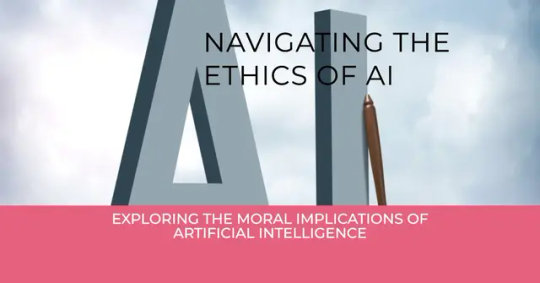
The Ethics Of Ai: Maneuvering The Moral Terrain
The Ethical Considerations in AI: Balancing Responsibility and Innovation
Considering the ethical implications as AI becomes increasingly integrated into our lives and society is essential. How do we ensure the ethical use of AI? How do we safeguard the privacy and data of individuals in a world dominated by AI? How do we prevent AI bias and ensure that AI decisions are fair? Whether or not to use particular technology to solve a problem must be addressed.
Ensuring Fair and Responsible Use of AI: The Regulatory Landscape
In AI, there are regulatory considerations in addition to ethical considerations. Governments worldwide are devising regulations and guidelines for AI to ensure it is used fairly and responsibly. These regulations address data confidentiality, AI transparency, and AI accountability. Adherence to these regulations can increase confidence in AI and ensure its beneficial application. In the European Union, for instance, the General Data Protection Regulation (GDPR) establishes stringent guidelines for data privacy, including how AI systems can acquire, store, and use personal data. It safeguards the privacy rights of individuals and ensures that AI is used responsibly and ethically.
The Function of AI in Data Analysis: Leveraging the Potential of Data

The Function Of Ai In Data Analysis: Leveraging The Potential Of Data
AI in Data Mining: Data Value Extraction
AI is indispensable for data analysis, particularly data mining. Data mining is the process of deriving useful information from vast datasets. AI's ability to analyze large quantities of data and recognize patterns makes it a potent instrument for data mining. It can aid organizations in making informed decisions, identifying opportunities, and enhancing operations.
AI in Predictive Analytics: Future Forecasting
Predictive analytics is a second area where AI excels in data analysis. Predictive analytics involves making predictions using historical data. Given its capacity to learn from data and make predictions, AI is optimal for predictive analytics. It can assist businesses in predicting trends, anticipating consumer demands, and planning for the future. AI can predict consumer behavior in the retail industry, for instance. AI can forecast which products they will likely purchase by analyzing a customer's past purchases and perusing habits. It enables companies to personalize their marketing efforts and enhance customer satisfaction.
Intelligent Machine Construction at the Intersection of AI and Robotics

Intelligent Machine Construction At The Intersection Of Ai And Robotics
The Role of AI in Robotics: Giving Machines Life
AI and robotics are closely intertwined disciplines. AI gives robots intelligence, allowing them to perceive their surroundings, make decisions, and perform tasks autonomously. AI is revolutionizing the field of robotics, from industrial robots that automate manufacturing processes to service robots that assist humans with tasks such as housekeeping and caregiving. In the healthcare industry, for instance, robotics propelled by AI assist surgeons during complex procedures, enhancing precision and reducing the risk of complications.
Examples of AI Robots in Real-World Applications: From Manufacturing to Healthcare
There are many examples of AI vehicles in the actual world. AI devices are used in manufacturing for assembly, inspection, and packaging. AI devices are used for surgery, rehabilitation, and patient care in healthcare. These examples demonstrate the potential for AI robots to increase productivity, accuracy, and efficiency in various industries. In the automotive industry, AI robots are utilized on assembly lines to increase production efficiency and decrease errors. AI devices are used for patient rehabilitation in the healthcare industry, assisting patients in regaining motor skills following a stroke or injury.
Impact of AI on the Employment Market: Danger or Opportunity?

Impact Of Ai On The Employment Market: Danger Or Opportunity?
The Influence of AI on Employment: Job Loss or Job Creation?
One of the most significant concerns is the impact of AI on the job market. AI can indeed automate specific tasks. Duties and potentially eliminate some jobs; it is also true that AI can generate new opportunities and employment. The advent of AI, for instance, has increased the demand for AI specialists, data scientists, and other tech professionals. In addition, automating mundane duties creates jobs in the technology sector and enables professionals in other disciplines to enhance their responsibilities and boost their productivity.
The Skills Required in a World Driven by AI: Planning for the Future
As AI continues transforming the employment market, we must acquire the necessary skills for a world dominated by AI. These abilities include technical abilities, such as programming and data analysis, and emotional abilities, such as critical thinking and creativity. By acquiring these skills, we can prepare for the future and capitalize on the opportunities presented by AI. The advent of AI, for instance, has increased the demand for AI specialists, data scientists, and other tech professionals. In addition, by automating mundane duties, AI has the potential to automate routine tasks, freeing up Humans should focus on more complex and creative tasks. Endeavors.
AI's Transformative Potential

Ai's Transformative Potential
AI is a revolutionary technology that is altering our world. Leading experts in the field of AI echo this sentiment. Andrew Ng, a renowned AI expert and co-founder of Coursera, has said, 'Artificial intelligence is the modern equivalent of electricity. Like electricity revolutionized multiple industries a century ago, AI will now bring the same transformation.' Similarly, Fei-Fei Li, a leading AI researcher and professor at Stanford University, believes that 'Many people claim that our era is the next Industrial Revolution. AI is undoubtedly one of its driving forces.
Comprehending how AI operates
We can leverage its power to solve complex problems, make intelligent decisions, and build a better future. As we continue to investigate the potential of AI, we must consider its ethical implications and work toward a future in which AI is used responsibly and for the benefit of all. The future of AI is in the hands of those who develop and regulate it. Prepare yourself for an exciting journey into the future of AI!
Read the full article
#AIandEmployment#AIandRobotics#AIEthics#AIinDataAnalysis#AIinRealWorld#ArtificialIntelligence#DeepLearning#FutureofAI#HowDoesAIWork?#MachineLearning#NeuralNetworks
1 note
·
View note
Text
Robotics and Automation: How Machines Are Changing the World
youtube
In today's rapidly evolving world, the fields of robotics and automation have emerged as powerful catalysts of transformation. With breakthroughs in technology, these advancements are reshaping industries, revolutionizing processes, and making significant strides toward creating a more efficient and convenient future. From manufacturing and healthcare to transportation and beyond, robotics and automation are changing the way we live, work, and interact. This article will explore the incredible impact of machines in various sectors and delve into the ways they are shaping the world we live in.
The Rise of Robotics and Automation: Robots have come a long way from being mere science fiction fantasies to becoming integral parts of our daily lives. In recent years, the United States has witnessed a remarkable surge in the adoption of robotics and automation across industries. This rise can assist several factors, including advancements in AI, machine learning, and sensor technology.
Revolutionizing Manufacturing: One of the most significant areas where robotics and automation have made their mark is in manufacturing. The automation of repetitive and mundane tasks on assembly lines has increased productivity and precision while reducing costs. Robotic arms and machines can perform intricate tasks with speed and accuracy, leading to enhanced efficiency and higher-quality outputs. This transformation has allowed manufacturers to meet growing consumer demands while maintaining competitiveness on a global scale.
Transforming Healthcare: Robotics and automation have also revolutionized the healthcare industry, enabling breakthroughs in diagnosis, treatment, and patient care. Surgical robots have enhanced the precision and minimally invasive nature of procedures, leading to faster recovery times and improved patient outcomes. Robots are also being used in rehabilitation therapies, assisting patients in regaining mobility and independence. Additionally, robotic exoskeletons have shown promise in aiding individuals with physical disabilities, empowering them to engage in daily activities with greater ease.
Advancing Transportation: The transportation sector has experienced a paradigm shift with the advent of robotics and automation. Self-driving cars and trucks are on the horizon, promising safer and more efficient transportation systems. Autonomous vehicles equipped with advanced sensors and machine learning algorithms can analyze their surroundings, make split-second decisions, and navigate complex road conditions. This technology not only reduces the risk of human error but also holds the potential to optimize traffic flow, reduce congestion, and minimize fuel consumption, leading to a greener and more sustainable future.
Impacting Agriculture: Agriculture, a fundamental sector for sustaining human life, is also benefiting from the integration of robotics and automation. Robots are being used for precision farming, where they can do jobs such as planting seeds, applying fertilizers, and monitoring crop health. Autonomous drones equipped with imaging technology can survey vast areas of farmland, enabling farmers to detect crop diseases, optimize irrigation, and enhance overall yields. These advancements in agriculture not only increase productivity but also help to reduce the environmental impact of farming practices.
Enhancing Everyday Life: Beyond industries, robotics, and automation are transforming our everyday lives. Robotic vacuum cleaners, smart home systems, and voice-activated assistants have become increasingly common, simplifying household chores and improving convenience. Assistive robots are aiding the elderly and individuals with disabilities, offering companionship and support in their daily activities. With further advancements, robots have the potential to become an integral part of our households, helping us lead more comfortable and independent lives.
Conclusion: As we witness the profound impact of robotics and automation across sectors, it becomes evident that machines are changing the world in unprecedented ways. From manufacturing and healthcare to transportation and agriculture, the integration of robotics and automation has enhanced efficiency, improved quality, and opened up new possibilities. The United States, with its emphasis on innovation and technological advancements, is at the forefront of this transformation. By embracing these technologies and harnessing their potential, we can pave the way for a future where machines and humans work together, creating a world that is safer, smarter, and more interconnected. For more information please contact Global Education.
#RoboticsRevolution#AutomationAdvancements#ChangingTheWorld#FutureTech#ManufacturingInnovation#HealthcareAutomation#TransportationTransformation#AIandRobotics#EfficiencyEnhancement#TechInnovations#IndustryDisruption#SmartMachines#DigitalTransformation#WorkforceReadiness#SustainableFuture#Youtube
1 note
·
View note
Text
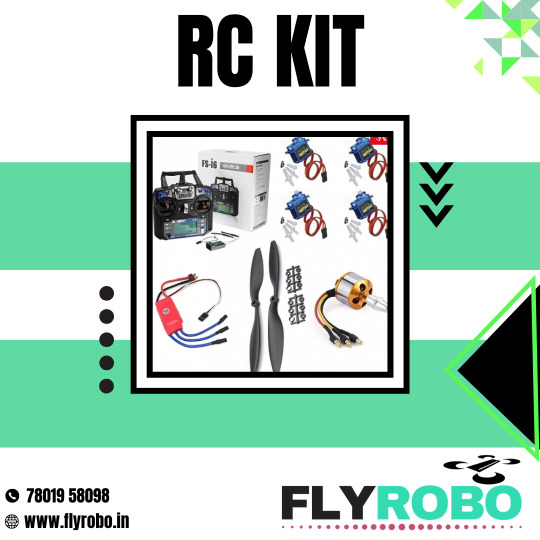


#RoboticsTechnology#AutomationRevolution#AIandRobotics#FutureofTech#RoboticsInnovation#RoboticsProjects#TechEnthusiasts#RoboticDesign#RoboticsCommunity#TechAdvancements#viral#trending#viralpost#viralcontent#goingviral#internetfame#viralblog#tumblrviral#viralphoto#viralvideo#viralchallenge#viralmarketing#viralmania#viralinspiration#viralhumor#viralnews#viralquotes#viralstory#viralblogging#viralife
1 note
·
View note
Text
AI Unraveled: The Fascinating World of Artificial Intelligence
Hey there, fellow Internet wanderers!
Welcome to my little corner of the web, where we dive into the captivating realm of Artificial Intelligence (AI). 🌟
Now, you might be wondering, "What in the world is AI?" Well, don't worry, I'm here to break it down in the simplest way possible!
Imagine if we could create computers that think, learn, and act just like humans. That's AI! It's like giving machines a brain and letting them do some incredible magic. 🧠✨
AI is all around us! From voice assistants like Siri and Alexa to those nifty recommendation algorithms suggesting your next favorite song or show, AI has woven its way into our daily lives.
But wait, how does AI actually work? 🤔
Well, it's like training a pet. Instead of teaching a dog to fetch a ball, we "train" AI by feeding it loads of data. The more data it munches on, the smarter it gets. So, with each passing day, AI becomes a virtual Einstein!
AI comes in different flavors:
Machine Learning: This is like AI's learning playground. It's where machines improve by themselves without being explicitly programmed. Just like how you learn from experiences, machine learning algorithms learn from data.
Natural Language Processing (NLP): This is where AI tries to understand human language. Have you ever talked to Siri and got a response? That's NLP in action, making it possible for machines to speak human!
Computer Vision: Ever noticed how Facebook can automatically recognize your friends in photos? That's computer vision. AI can now see, understand, and interpret visual content just like we do!
Robotics: AI and robots make an amazing team. Robots become smart and can perform tasks with human-like intelligence, from assembling cars to exploring space!
Now, I know some of you might wonder if AI will take over the world like in the movies. 😱 But fear not! As of now, AI is created to help and assist us, not to replace us. It's like having a super smart buddy by our side, making life easier and more enjoyable.
Of course, there are also important discussions about ethics and ensuring AI is used responsibly and fairly. We, as the creators, have a big responsibility to guide AI's development in a way that benefits everyone.
So, there you have it, a glimpse into the captivating world of AI! I hope this blog sparked your curiosity and brought some clarity to this futuristic technology.
Remember, AI is still evolving, and who knows what amazing things it will bring in the future! So, let's keep an eye on this AI adventure together. 🚀
Until next time,
AI Enthusiast 🤖💕
#AI#ArtificialIntelligence#MachineLearning#NLP#ComputerVision#Robotics#TechTalk#AIEnthusiast#AIExplained#FuturisticTech#SmartMachines#TechMagic#LearningFromData#VirtualEinstein#ResponsibleAI#FutureTech#HumanFriendlyAI#TechAdvancements#AIinDailyLife#AIandRobots#TechBlog#ExploringAI#CuriousAboutAI#TechRevolution#Innovation#EthicalAI#TechEthics#AIAssistance#TechBuddy#AIandUs
0 notes
Text
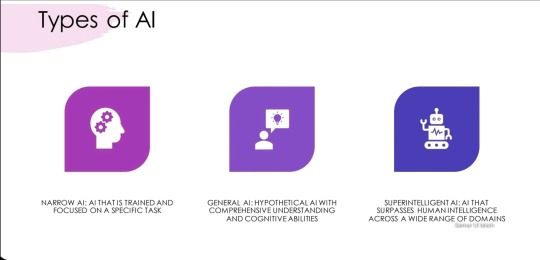
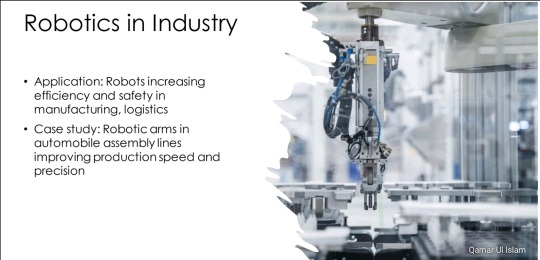

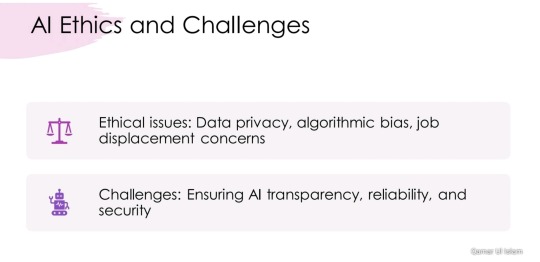

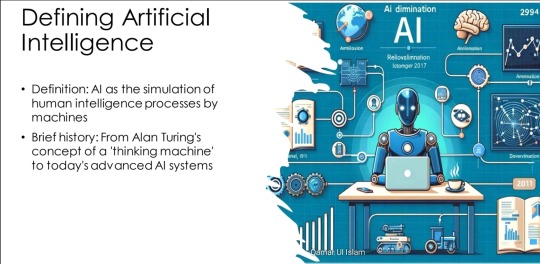
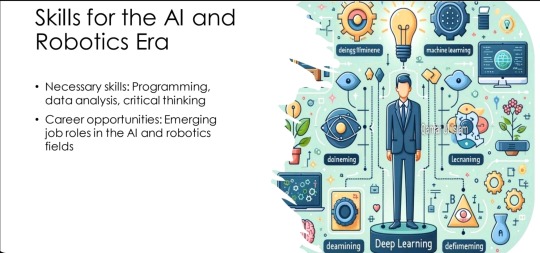


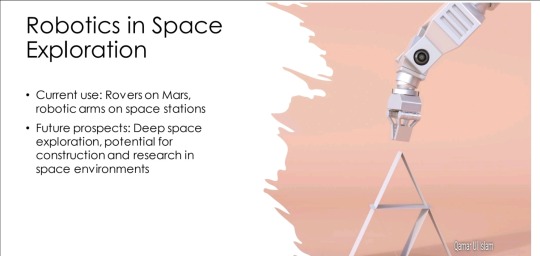
🎙 Delighted to delivered a lecture on "𝕴𝖓𝖙𝖗𝖔𝖉𝖚𝖈𝖙𝖎𝖔𝖓 𝖙𝖔 𝕬𝕴 𝖆𝖓𝖉 𝕽𝖔𝖇𝖔𝖙𝖎𝖈𝖘" to the Community 🤖🌟
📈 Discussed the fascinating world of AI, Machine Learning, Deep Learning, and how they're shaping the future. 🧠💻
🤖 Explored the incredible capabilities of robots in diverse fields. From manufacturing to healthcare, the possibilities are boundless! 🏭🏥
🌐 The world of technology is evolving, and it's essential to stay informed about these game-changing innovations! 🚀
I'd love to hear your thoughts and comments about the lecture! What intrigued you the most? Let's continue the discussion. 🗣️💬
#AI #Robotics #MachineLearning #DeepLearning #TechInnovation #FutureTech #Education #AIandRobotics #EngagingLecture #StayInformed
0 notes
Photo

This is the best way to diversify your $1000 investment👆
#xbusinessmentor#billionaires#business#entrepreneurship#businessmindset101#money#enterpreneur#productivity#millionairementor#millionaire#education#inspiration#motivation#hustle#lesson#nevergiveup#hardwork#financialfreedom#investing#advice#smallstartups#milliondollar#foodandbeverage#pharmaandchemical#aiandrobotics#itsoftwareand
0 notes